The Peak Water filter is made for coffee lovers and claims it can dramatically change the taste of your home brew. To find out if those claims are justified, we bought one and after one month, this is our review.
Summary Up Front
The Peak Water filter for me made coffee that was night and day different. Making back to back espresso, first without and then with the Peak, the Peak espresso was more balanced, smoother and allowed more of the flavour to show through.
I was suddenly aware of how bad my espresso had been tasting before. However, I live in an area with hard water, and hard water destroys the flavour. Depending on your water type, your results may differ.
If you’ve invested in a decent grinder and espresso machine, you frankly are bonkers if you don’t do something about your water. Before that was more difficult, but now this filter makes that decision easy. For most people, this is a definite recommended buy.!
Do You Need a Dedicated Coffee Water Filter?
Most of you will know that coffee shops use commercial water filters plumbed into their machines. There’s a reason for that; the chemical makeup of the water makes a huge difference in the extraction of the properties of coffee that define the taste.
The Peak Water filter was created to bring that level of control to the brewing process to the home at an affordable level.
An explanation of Total Dissolvable Solids
You may have seen the term ‘Total Dissolvable Solids’ (TDS) on a bottle of mineral water. This number refers to the salts and other organic matter that is dissolved in the water you drink.
Elements like magnesium and sodium are important for our bodies health, for example, the correct balance of these is required for the heart to function correctly. Heart arrhythmia can occur when these are not in balance.
TDS is expressed in units of mg per unit volume of water (mg/L) and also referred to as parts per million (ppm). Tap water, for example, might have a TDS value of 100-200 mg/l.
The Health Organization performed a study and concluded that the preferable level of TDS in water (mg/l):
- 50 – 300: Excellent
- 300 – 600: Good
- 600 – 900: Fair
- 900 – 1,200: Poor
- Above 1,200: Unacceptable
But the question is not what the TDS level is as much as what makes up the TDS. In Coffee, this is where it becomes important.
Why Water Makes a Difference to Coffee
There a several reasons why water affects the flavour of coffee. First, consider when we make espresso, we can describe the result in terms of its acidity, bitterness and sweetness.
Some of the elements present in tap water – namely calcium carbonate – are alkaline and therefore neutralise acidity. While you might think that’s a good thing, too much alkaline ‘buffer’ will make your coffee taste very dull. This is especially noticeable in lighter or medium roasts.
The SCAA has Brew Standards for water content – see the table below.
| Characteristic | Target | Acceptable Range |
|---|
Another important element is the levels of magnesium and calcium. Magnesium assists the extraction of the fruitier flavours we want from our single-origin beans, calcium pulls out a weightier flavour. Magnesium has a stronger effect than calcium and is generally more important.
Brewing with soft water often has high levels of sodium which isn’t very good at extracting flavour from the coffee grinds, so people in soft water areas will find it harder to get interesting flavours from their beans.
So We Need a Water Filter Made for Coffee?
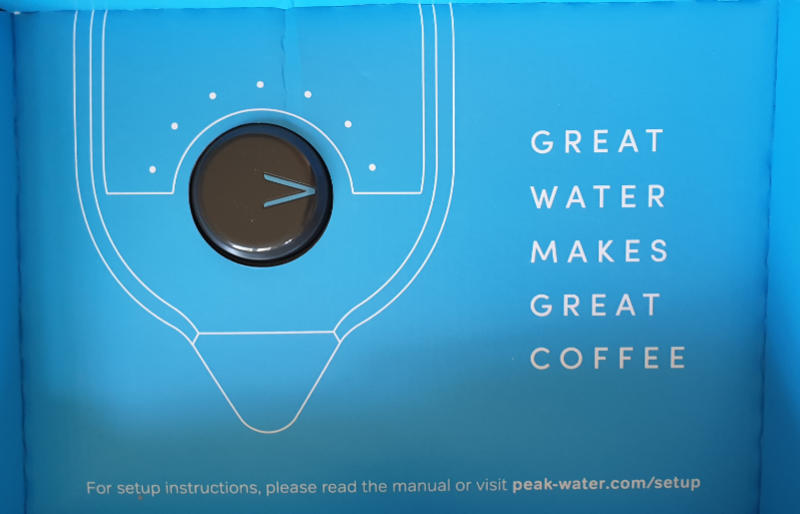
You want to know if it makes a difference to the taste of coffee! The answer is yes. In fact, I can say that I was actually quite surprised at how noticeable that difference was. It works!
My son who was unaware that I had done anything different asked me if I had changed the grind settings because he couldn’t understand why his coffee had changed so much.
So yes, go ahead and tick that box. Set it up correctly (we’ll come onto that shortly) and you will probably get a quite dramatic change in taste, very much for the better. The actual amount of change might vary depending on the water you were using before. Our water is very hard and so there was a lot of correction and a substantial and noticeable difference.
Peak Water Filter Design
There is some set up required before first use and each time you’ll change the filter. Installing the flimsy plastic components was a frustrating experience that requires a long plastic stalk to be slotted into the filter. This allows the dial to control the waters path and hence the length of exposure to the chemicals.
The overall look of the Peak Water filter fits nicely with my other equipment. Some bemoan the lack of transparency which makes it impossible to know your water level without picking it up. I have not found a problem from that, however. When I use it, if it’s light afterwards, I put more water in so it’s ready for the next time.
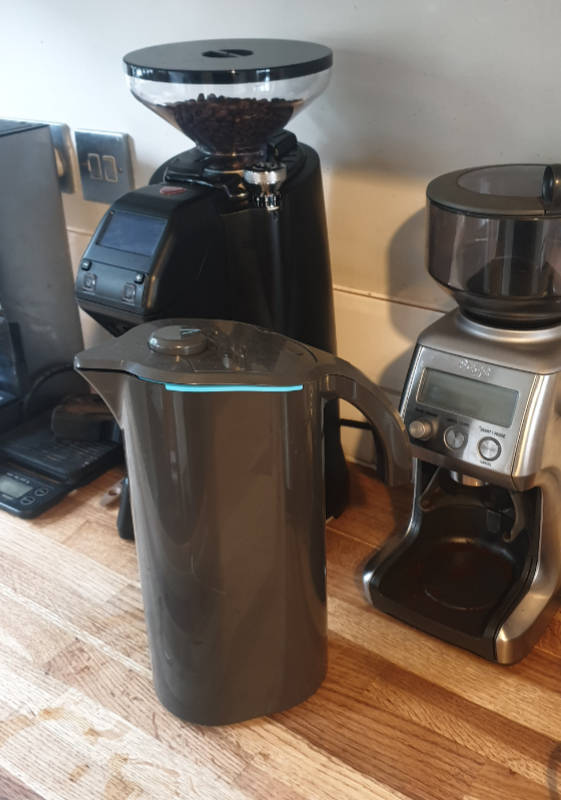
I understand the need to keep costs down, but I wonder how much more it would have cost to have used better quality materials that might better reflect the premium device this is in other respects.
When fiddling to assemble the plastic stalk which connects the dial to the filter – a process that took me over 5 minutes – I broke the flap on the spout. It did re-attach, but there wasn’t much love for the jug at this point. You will have to go through this every time you change the filter, so I hope my technique will improve.

Since the filter is the active part of the solution, below I put a regular Brita filter (on the left) next to the Peak water filter (on the right). The Peak dwarfs the Brita filter as you can see, which, in a very un-scientific way, helped me feel better about spending so much money on it.
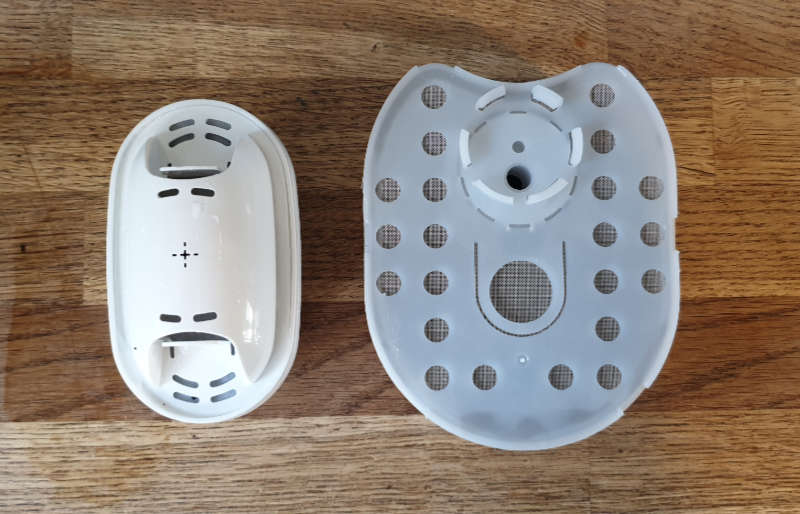
If you’re currently using bottled water, for example, you may not see as much change. In fact, the amount of change you’ll get depends on your existing water. Where I live, the water is very hard and the difference in taste is immediately obvious.
The filter will, for most of us, outlast the 60 days that health and safety boffins say is when you should change a water filter to avoid build-up of bacteria. So count on replacing it every 60 days. Add that cost to the price of your morning espresso if you like to do the cost-accounting to justify your investment to your partner.
Replacement filters are available for £30 in the UK about $40 in the US, for a twin-pack. That’s £0.25p or $0.30 a day on top of your normal price. If you make a single espresso each day, that’s a pretty heavy premium, but it’s a flat cost, so the more coffee you make the cheaper it gets per cup.
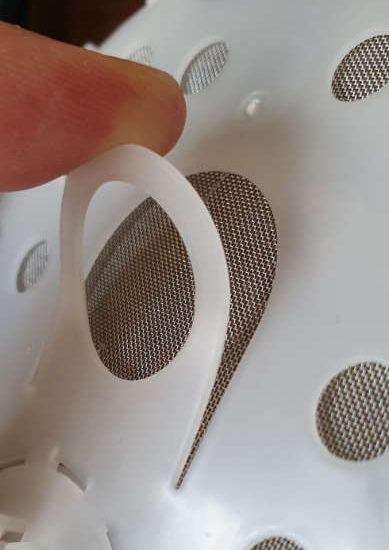
While the other materials may be lacking, I very much appreciated strong plastic tab on the filter. When it comes time to replace it, I wont worry about breaking the tab by pulling too hard.
You can send your water filter back to Peak Water, who will pay for the postage, and they will recycle it.
How Does the Peak Filter Work
I wasn’t willing to cut open my filter to examine the internals. However, the principle is quite simple and clever.
You receive a test kit with a strip and a chart. There are three chambers and a baffle maze that forces the water through a specific path:
- Carbon stage
- First resin layer which balances nitrates
- Second resin layer which balances out minerals like calcium and magnesium
Setting up the Peak Filter
What’s in the Box?
Here’s what you get:
- The jug itself
- One filter (unless you bought a kit with two)
- A user guide
- Water test kit with 2 test strips
Useful Manual
The manual has been very well designed. It’s clear and explains the process thoroughly. As with every water filter, you’re required to charge the filter by running through a couple of jugs of water.

First Test Your Water
The first step is to test your water with the supplied kit. You do this simply with a glass of water and one of the two test strips provided. You dip the strip in the water five seconds and then match the colour against the chart after waiting for 10 seconds.
If you’d like to find out what your water is like without ordering the kit, you can, in fact, get a free test kit from Peak Water directly. Just go to this part on their website and fill out the request form.

Connecting the Dial to the Filter
Once you’ve put the filter into the bottom of the internal sleeve that goes into the jug exterior, you need to connect the lid. The lid has a long plastic stalk extending from underneath, and you need to slot this into the filter at the bottom of the jug.
I found this difficult and frustrating. Once I did get it connected, the dial wouldn’t turn. Finally, I removed the filter, connected it outside of the sleeve and once I was sure it was working, was able to put it back in and re-connect it.
To be fair in this video, I’m trying to connect it while filming, so I’ve not made it any easier for myself.
Charging the Filter
Before setting the dial to the recommended number for your water, you first must charge it by filling it a couple of times and throwing the water away. Once that is done, you set the dial to the level you determined during the water test, fill it up and you’re ready to use it.
Final Thoughts
I was a bit disappointed when it first arrived. The box was battered, the materials felt cheap, and it was hard to assemble. Everything changed however when I tasted the results.
After living with it for a month, I like how the design fits in with my kitchen. I also like how it doesn’t look dirty like my Brita filter does. The Peak Water Filter has become invisible to me as it has been assimilated into my normal coffee routine, and that says a lot about what I think of it. I certainly will not be going back to the Brita any time soon.






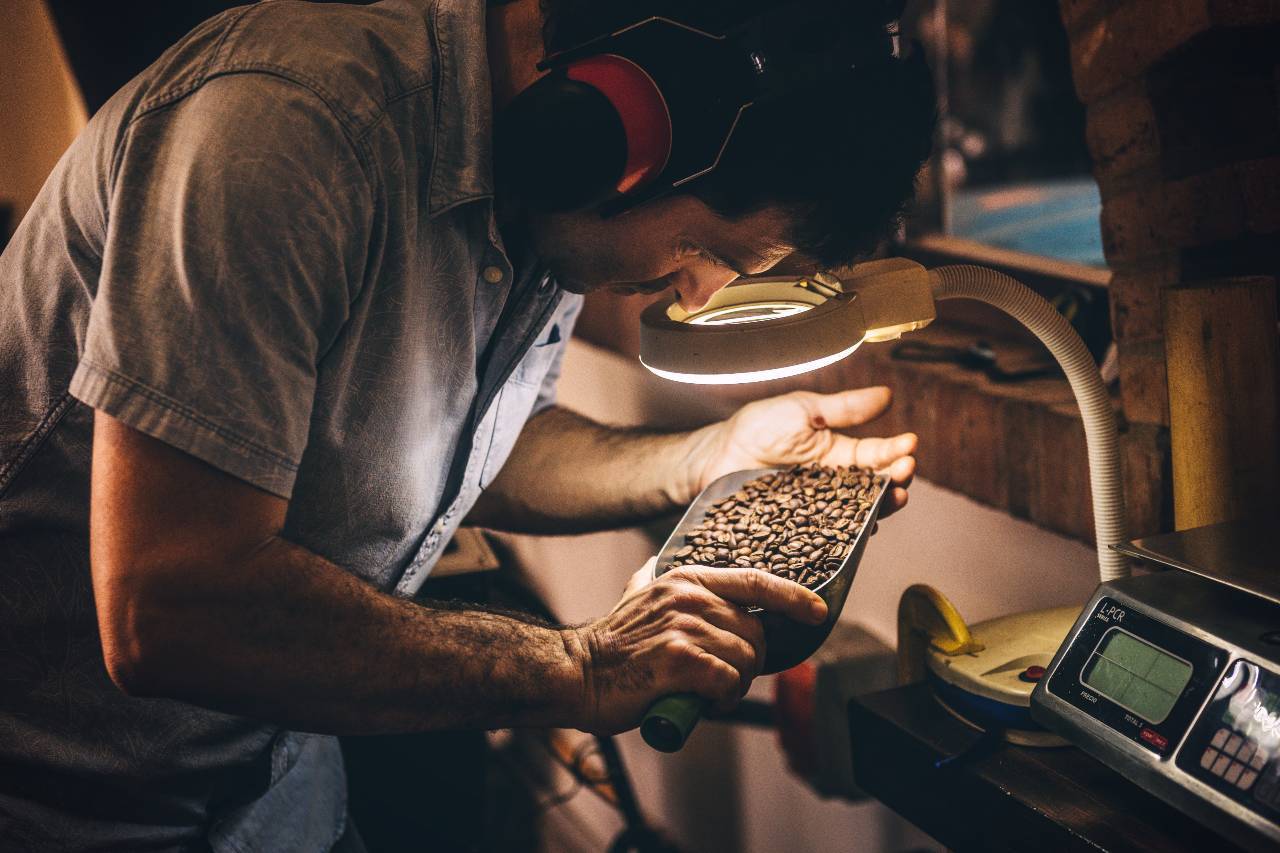

I am interested in the Peak water filter but, so far, all I can find are reviews that talk about how the Peak will improve the flavor of your water for coffee brewing. There are more important things for a water filter to solve, like the reduction of chlorine, volatile organic compounds, lead, and other contaminants. Yes, we want our coffee to taste good but, more importantly, we want the water we are using to be healthy. I’m not sure a simple carbon and resin filter on the Peak Water Pitcher will achieve healthy, clean drinking water. I’m waiting for independent tests.